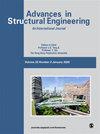汽车智能自适应大灯光束强度控制方法综述
IF 2
4区 工程技术
引用次数: 0
摘要
汽车前大灯是汽车的关键部件,在夜间行车时尤为重要。远光灯的设计是为了优化驾驶员在长途道路上的能见度,传统上依靠驾驶员手动控制。然而,这种手动控制带来了挑战,尤其是当远光灯使迎面而来的驾驶员暂时失明时。由此给对向车辆驾驶员造成的眩目是一个重大问题。针对这些问题,对能够自动调节远光灯强度的自适应智能前大灯的需求日益增长。智能前照灯系统无需驾驶员的明确输入,即可承担调节光束强度的责任。本研究旨在系统回顾控制智能前大灯光束强度的各种方法。本文确定了智能前大灯光束强度控制的四种主要方法,它们是公认的广泛应用技术。此外,研究还发现了其中一些强度控制方法之间的有趣联系。对使用率的调查表明,基于传感器和机器学习(ML)的强度控制方法是汽车前大灯设计师最常采用的方法。论文最后对智能前大灯技术的未来前景进行了展望,为该领域未来的研究人员提供了指导。本文章由计算机程序翻译,如有差异,请以英文原文为准。
A review of automotive intelligent and adaptive headlight beams intensity control approaches
The automotive headlight stands out as a critical vehicle component, particularly emphasized during nighttime driving. The high beam, designed for optimal driver visibility on long-distance roads, traditionally relies on manual control by the driver. However, this manual control poses challenges, particularly when the high beam light temporarily blinds oncoming drivers. The resultant dazzle for drivers of opposing vehicles is a significant concern. In response to these issues, there is a growing demand for adaptive and intelligent headlights that can autonomously adjust beam intensity. The intelligent headlight system takes on the responsibility of modifying the beam intensities without requiring explicit input from the drivers. This study aims to systematically review various approaches to controlling intelligent headlight beam intensity. The paper identifies four prominent approaches to intelligent headlight beam intensity control, recognized as widely used techniques. Furthermore, the study uncovers intriguing connections between some of these intensity control approaches. A survey on utilization rates indicates that sensor-based and machine learning (ML)-based intensity control approaches are the most commonly employed methods by automotive headlight designers. The paper concludes by providing insights into the future prospects of intelligent headlight technology, offering guidance for future researchers in this field.
求助全文
通过发布文献求助,成功后即可免费获取论文全文。
去求助
来源期刊

Advances in Mechanical Engineering
Engineering-Mechanical Engineering
自引率
4.80%
发文量
353
期刊介绍:
Advances in Mechanical Engineering (AIME) is a JCR Ranked, peer-reviewed, open access journal which publishes a wide range of original research and review articles. The journal Editorial Board welcomes manuscripts in both fundamental and applied research areas, and encourages submissions which contribute novel and innovative insights to the field of mechanical engineering
 求助内容:
求助内容: 应助结果提醒方式:
应助结果提醒方式:


